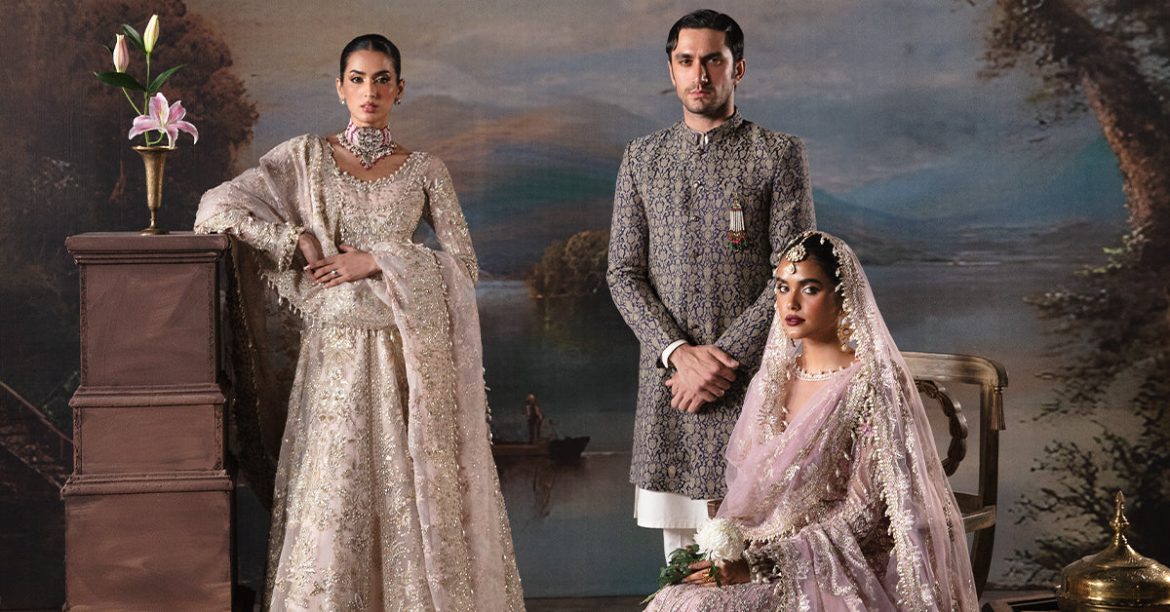Eid in Pakistan is a celebration that transcends religious boundaries, bringing together people from diverse backgrounds to commemorate the end of Ramadan. As families and communities unite to celebrate this joyous occasion, a significant aspect of the festivities is the attire worn during Eid. Pakistani Eid clothes have a rich history deeply rooted in tradition, yet they continually evolve to incorporate modern elements. This blend of tradition and modernity is evident in the diverse range of clothing choices that Pakistanis make during this auspicious time. In this article, we delve into the fascinating world of Pakistani Eid clothes, exploring the traditional attire, the influence of regional variations, the significance of colors, the impact of global fashion trends, and the rise of sustainable and ethical fashion choices.
Traditional Attire: Resplendent in Cultural Heritage
The heart of Pakistani Eid clothes lies in the traditional attire that reflects the rich cultural heritage of the country. For men, the classic shalwar kameez remains a staple choice, often adorned with intricate embroidery or delicate embellishments. Women, on the other hand, lean towards elegant and vibrant shalwar kameez or anarkali suits, with a variety of traditional embroidery techniques like gota work, zari, and zardozi. The choice of fabric is crucial, with luxurious materials like silk, chiffon, and organza being favored for the festive occasion. This traditional attire not only symbolizes cultural pride but also connects individuals to their roots, fostering a sense of identity and belonging.
Regional Variations: A Tapestry of Diversity
Pakistan is a land of diverse cultures, each region contributing its unique flavor to the tapestry of traditions. The regional variations in Pakistani Eid clothes add a fascinating dimension to the celebration. In Punjab, for example, women may opt for the vibrant and heavily embroidered phulkari dupattas, while in Sindh, the ajrak print holds cultural significance and finds its way into clothing. Balochi embroidery from Baluchistan and Sindhi mirror work are distinctive features that make regional variations in Eid attire truly captivating. The ability of Pakistani fashion to integrate these diverse influences showcases the unity in diversity that characterizes the country.
The Significance of Colors: A Kaleidoscope of Emotions
Colors play a vital role in Pakistani Eid clothes, with each hue symbolizing different emotions and cultural meanings. Traditional colors such as vibrant greens, royal blues, and deep reds are popular choices, representing joy, prosperity, and love. Additionally, the choice of colors may be influenced by personal preferences or family traditions. In recent years, there has been a surge in experimenting with pastel shades and unconventional color combinations, showcasing the fusion of traditional values with contemporary aesthetics. The use of color during Eid not only enhances the visual appeal of the celebrations but also carries a deeper cultural resonance.
Global Fashion Trends: Bridging Tradition and Modernity
The globalization of fashion has left an indelible mark on Pakistani Eid clothes. The younger generation, in particular, is increasingly drawn to the fusion of traditional attire with global fashion trends. Western silhouettes, asymmetrical cuts, and fusion wear that seamlessly blend eastern and western elements have become popular choices. Designers in Pakistan are incorporating these international trends into their collections, creating a dynamic and eclectic range of Eid clothes. This cross-cultural exchange not only adds a contemporary flair to the traditional attire but also reflects the evolving fashion sensibilities of the Pakistani populace.
Sustainable and Ethical Fashion: A Conscious Choice
In recent years, there has been a growing awareness of the environmental impact of the fashion industry. This consciousness has led to a shift towards sustainable and ethical fashion choices, even during festive occasions like Eid. Many designers and brands in Pakistan are now focusing on using eco-friendly fabrics, promoting fair labor practices, and adopting sustainable production methods. Handwoven fabrics, organic dyes, and upcycled materials are gaining popularity, allowing individuals to celebrate Eid in style while making environmentally conscious choices. This shift towards sustainability aligns with the global movement towards ethical fashion and reflects a growing sense of responsibility among consumers.
Accessorizing Traditionally: A Touch of Elegance
No Pakistani Eid ensemble is complete without the perfect accessories. Traditional jewelry, such as jhumkas, matha pati, and intricate bangles, adds a touch of elegance and completes the traditional look. However, modern influences have led to an integration of contemporary accessories, such as statement earrings and minimalist jewelry, creating a harmonious blend of old and new. Handbags and footwear are also carefully chosen to complement the overall look, with many individuals opting for traditional khussas or juttis to add a cultural touch to their attire. The art of accessorizing during Eid showcases the meticulous attention to detail that Pakistanis invest in their festive ensembles.
Filhaal UK – Elevating Your Eid Style with Timeless Elegance
As you embark on the journey of selecting the perfect Pakistani Eid clothes, consider indulging in the exquisite offerings of Filhaal UK, the No.1 Clothing store that stands as a beacon of quality and style. Renowned for curating the top Pakistani and Asian brands, Filhaal UK is your go-to destination for high-quality Pakistani clothes in the UK. Whether you’re in search of stunning wedding dresses, casual wear, or party attire for women, Filhaal UK seamlessly blends tradition with contemporary aesthetics. Elevate your Eid celebrations with the assurance of top-notch craftsmanship and the latest fashion trends by choosing Filhaal UK for an unparalleled shopping experience.


